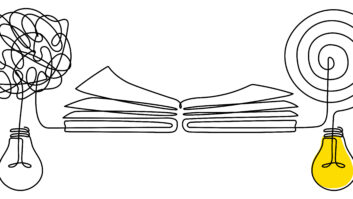On December 5, 1888, a group of reporters gathered at the West Orange, N.J., laboratory of Thomas Edison. Present in the room was Edison himself, along with several of his associates. At the time, a business battle of epic proportions was being waged between Edison’s direct current (DC) electrical systems and the upstart alternating current (AC) systems being developed by his rivals, Westinghouse and Tesla. The group of reporters had assembled at Edison’s lab to witness a demonstration aimed at highlighting the dangers of AC electricity, a primary tactic in Edison’s campaign to discredit his competition. It’s unlikely that any of them were fully prepared for the grisly spectacle they were about to witness.

In a display that mixed scientific curiosity with morbid shock value, Edison’s team entered the lab leading a 1200-pound horse by the reins. The horse looked around the room unwittingly as the copper wires were wound around both of its forelegs. 700 volts were then pumped through the animal as it slumped to its knees, dead from the shock. The gruesome demonstration was just one in a grim, months-long parade of executions of dogs, calves, and horses all orchestrated by Edison and his team to discredit AC. Not content with limited audiences, Edison strategically spread the results of these morbid trials to politicians and business magnates across the nation.
It’s worth noting that all these tactics were employed by Edison and his team in spite of overwhelming evidence pointing to AC as a far superior technology. In spite of its inherent dangers, it was clear to anyone paying attention at the time that AC had massive and insurmountable advantages relative to DC — namely, AC was able to transmit long distances, making it the only viable candidate for the nationwide electrical coverage then being envisaged. DC, on the other hand, could only be transmitted roughly one mile; one needn’t have been very imaginative to picture the number of power stations it would have required to cover any major city, to say nothing of the entire country. Amid this wealth of evidence underscoring AC’s unmistakable advantages, Edison remained unyielding. His desperate demonstrations serve as a reminder of the hazards of becoming trapped by one’s own convictions.
In spite of all his efforts, Edison lost the so-called “War of the Currents.” In 1892, he was forced out of his company, Edison Electric, as part of a merger that resulted in the formation of General Electric. While the Edison name still epitomizes innovation in American folklore, it is clear that even he remained staunchly resistant to change when it ran contrary to his own ideas. It is an interesting thought exercise to consider how things might have unfolded differently if Edison was willing to pivot and was able to embrace and build upon the clear advantages of AC.
Also by Jason Griffing: Embracing Radical Incrementalism
Like Edison, it is all too easy for any of us to staunchly adhere to our own ideas, even when better ones have clearly emerged. While our battles may be waged on a smaller scale than Edison’s, we can still routinely find ourselves subjected to the same “not invented here” syndrome. The sense of pride and ownership we feel in our ideas biases our thinking. From the product lines we choose to sell and how we write proposals to the way we deliver projects and service our clients, every decision we make is subject to this skewed perspective.
To avoid this trap, it’s critical that we take steps to remain open-minded. We have to be able to put aside our feelings and recognize good ideas even when they run contrary to our current thinking. We have to assess ideas based on their merits, not their origins. We should regularly seek expertise from people we trust outside of our organizations. We should identify and challenge our own assumptions and foster a culture in which diverse perspectives are not only welcomed, but actively sought out.
In the ever-evolving landscape of business competition, few episodes better highlight the lengths to which leaders will go to defend their own ideas. Given the universal need to adapt and innovate, the lesson here is clear — we remain closed off to new ideas at our own peril.







